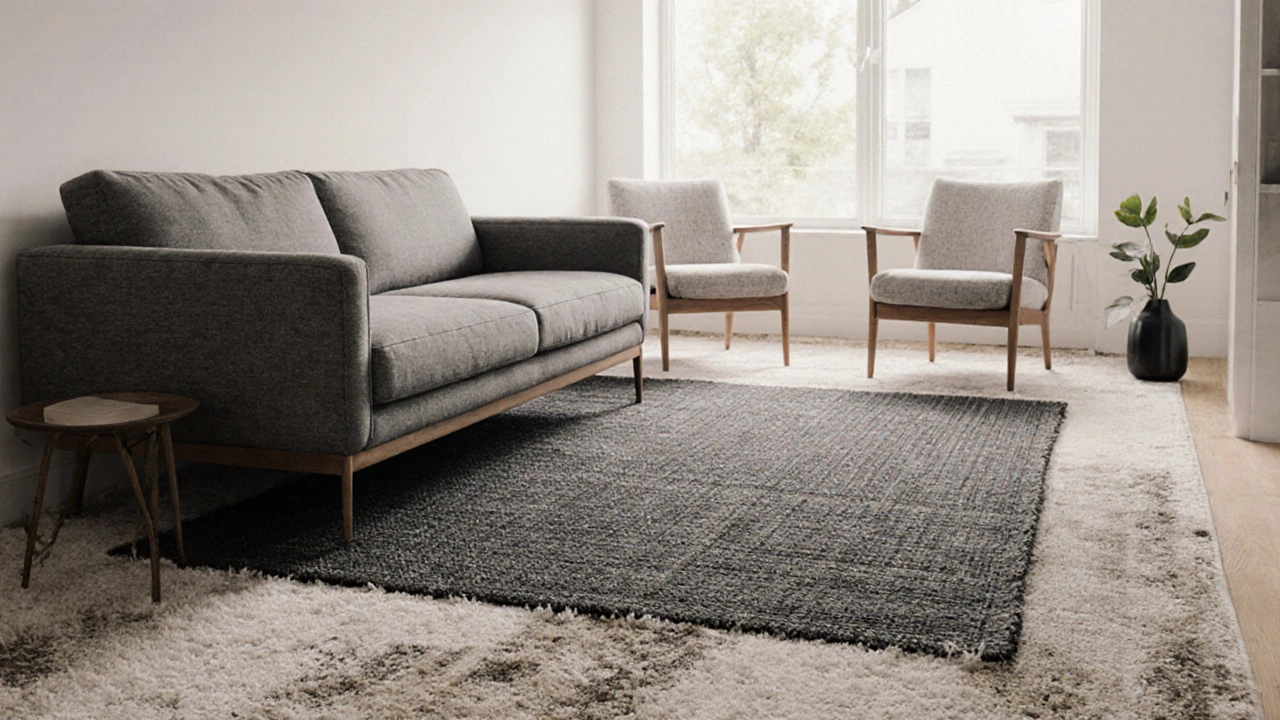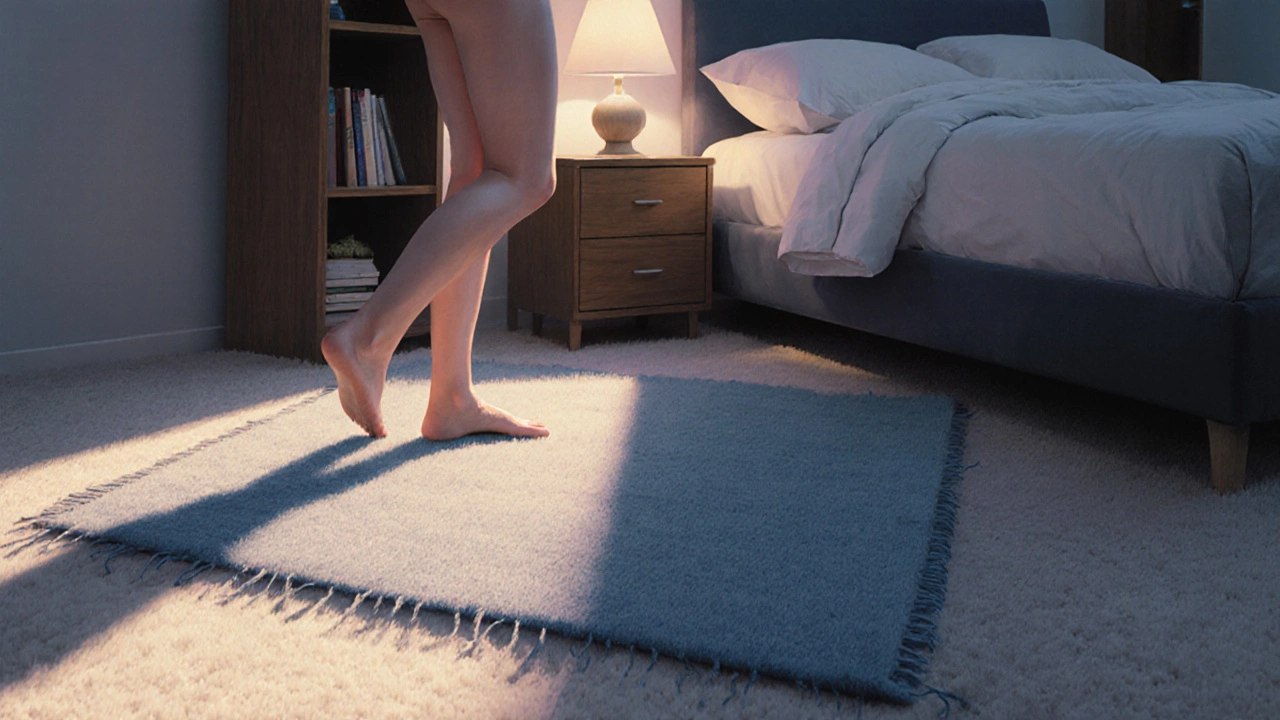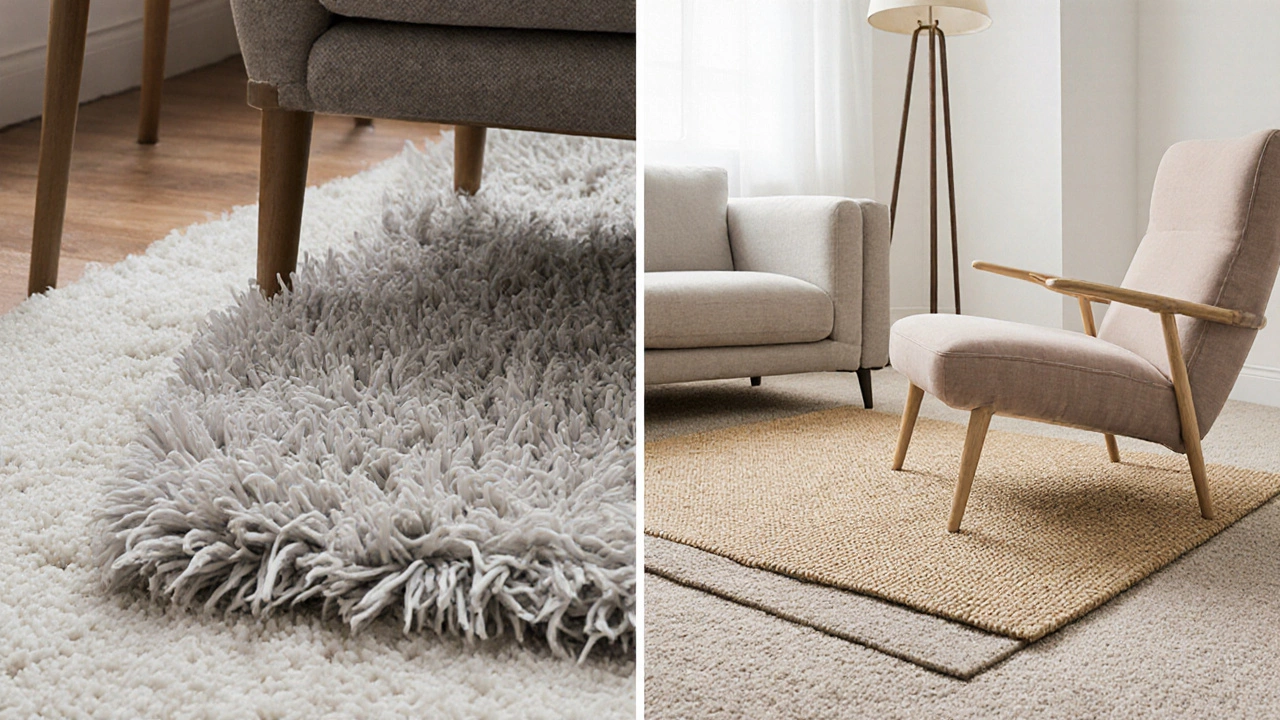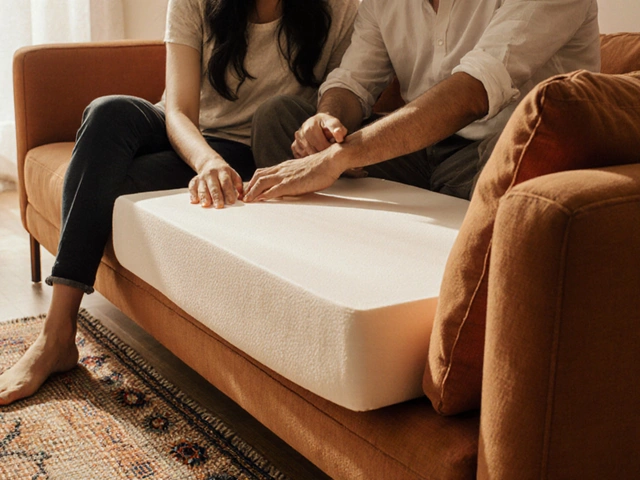
Rug Over Carpet Compatibility Checker
Check Your Carpet-Rug Combination
Answer these questions to see if your rug will work safely and effectively over your carpet.
Results
Key Recommendation:
People ask this all the time: Is it dumb to put a rug over carpet? The answer isn’t yes or no-it’s "it depends." Some folks swear by it. Others think it’s a waste of money. The truth? Layering a rug over carpet isn’t about being trendy or following rules. It’s about solving real problems in your space.
Why You’d Even Consider a Rug Over Carpet
You don’t put a rug over carpet because you think it looks fancy. You do it because your carpet is worn, your room feels flat, or you want to define a seating area without tearing up the floor. Maybe your carpet is a 1990s shag nightmare that won’t go away. Or maybe you’re renting and can’t change the flooring, but you still want to make the space feel like yours.Rugs over carpet aren’t just for luxury. They’re practical. A well-chosen rug can hide stains, reduce noise, add warmth underfoot, and anchor furniture. In a living room with faded, high-pile carpet, a low-pile flatweave rug can make the whole area feel intentional. In a bedroom, a soft wool rug over synthetic carpet turns cold, scratchy floors into something cozy.
When It Looks Good (And When It Doesn’t)
Not every rug works over every carpet. The biggest mistake? Choosing a rug that’s too thick. If your carpet is already plush-think hotel-style or shag-then piling on a high-pile rug creates an uneven, bumpy mess. You’ll trip. Your furniture will wobble. And the rug will bunch up in seconds.Instead, go for low-pile options:
- Flatweave rugs (like kilims or dhurries)
- Woven jute or sisal
- Thin wool rugs with tight weaves
- Outdoor rugs (they’re designed to lie flat)
These sit flush. They don’t fight the carpet underneath. And they’re easy to clean. If your carpet is short-pile or commercial-grade (like in an office or apartment building), you have more freedom. Even a thick shag rug can work if it’s meant to be layered.
Color and pattern matter too. If your carpet is busy-say, a faded floral or multi-colored geometric-go neutral with your rug. Cream, gray, or charcoal will ground the space. If your carpet is solid and boring (looking at you, beige wall-to-wall), a bold pattern or rich color can bring life to the room.
How to Keep It From Sliding
A rug on carpet doesn’t grip like it does on hardwood. It slides. It shifts. You step on it, and it moves. That’s frustrating-and dangerous.You need a rug pad. But not just any pad. Standard rubber or foam pads designed for hard floors won’t stick to carpet. You need a carpet-to-carpet pad. These are made with a non-slip backing that grips both surfaces. Brands like RugPadUSA and Mohawk offer ones specifically labeled for carpet underlay.
Pro tip: Skip the cheap, thin pads. They compress over time. Get one that’s at least 1/4 inch thick. It adds cushion, reduces noise, and keeps the rug locked in place. You’ll notice the difference the first time you sit down and the rug doesn’t slide out from under you.

Real-Life Examples That Work
Take a typical suburban living room. The carpet is 20 years old, slightly matted, and the color is stuck in a time warp. The furniture is modern, clean lines. The room feels disconnected.Put a 9x12 charcoal gray flatweave rug under the sofa and chairs. Let it extend 12 inches beyond the front legs. Now the space has definition. The rug pulls the furniture together. It adds texture without overwhelming. And because it’s low-pile, it doesn’t interfere with the carpet underneath. People walk across it without tripping. Pets lie on it. Kids play on it. No one thinks twice.
Another example: a rental bedroom with thin, synthetic carpet. You want softness underfoot in the morning. A 5x8 wool rug in a muted blue adds comfort. It’s machine washable. You can take it with you when you move. It doesn’t damage the carpet. And it costs less than replacing the whole floor.
What Experts Say
Interior designers don’t avoid rugs over carpet-they use them strategically. According to the American Society of Interior Designers (ASID), layering is one of the most common techniques for adding depth and comfort in homes with existing flooring. It’s not a hack. It’s a design tool.Professional designers look at three things before recommending a rug over carpet:
- Carpet pile height
- Room function
- Desired aesthetic
If the carpet is low-pile and the room gets heavy foot traffic (like a hallway or entryway), a durable rug adds protection. If it’s a bedroom with soft carpet, a plush rug enhances comfort. If the carpet is outdated but you can’t replace it, a rug is the fastest, cheapest way to refresh the space.
Common Mistakes (And How to Avoid Them)
Here’s what goes wrong-and how to fix it:- Mistake: Buying a rug that’s too small. Solution: The rug should be large enough to fit under all main furniture legs. In a living room, that usually means 8x10 or 9x12.
- Mistake: Choosing a rug with a high pile. Solution: Stick to flatweaves or low-pile options. Test it by running your hand over the carpet and rug together. If it feels bumpy, skip it.
- Mistake: Not using a pad. Solution: Get a carpet-to-carpet pad. It’s $20-$50 for a 9x12. Worth every penny.
- Mistake: Thinking it’s permanent. Solution: Rugs over carpet are flexible. You can change them every season or every few years. No commitment.

When You Shouldn’t Do It
There are times when layering a rug over carpet is a bad idea:- Your carpet is damaged, moldy, or has a strong odor. A rug won’t fix that. You need to replace the carpet.
- You have mobility issues. A thick, uneven surface increases fall risk.
- The rug is too heavy and you can’t move it easily. Cleaning underneath becomes impossible.
- You’re in a humid climate. Trapping moisture between rug and carpet can cause mildew.
If any of these apply, skip the rug. Fix the root problem instead.
Final Verdict: Not Dumb-Smart
Putting a rug over carpet isn’t dumb. It’s smart design. It’s practical. It’s affordable. It’s reversible. And if you choose the right rug, pad, and placement, it can transform a dull room into a cozy, intentional space.Don’t listen to the people who say "never do it." They’re either working with outdated advice or haven’t tried it with the right materials. The real question isn’t "Can you?" It’s "Should you?" And the answer is: yes-if you do it right.
Can I put a rug over carpet in a high-traffic area?
Yes, but choose a durable, low-pile rug like jute, sisal, or a flatweave wool. Pair it with a carpet-to-carpet pad to prevent slipping. Avoid thick, plush rugs-they’ll flatten fast and become tripping hazards in busy spots like hallways or entryways.
Will a rug damage my carpet?
No, if you use the right pad. A proper carpet-to-carpet pad prevents friction and holds the rug in place without crushing the carpet fibers. Without a pad, the rug can trap dirt and moisture, which may lead to staining or mildew over time. Always clean under the rug every few months.
What’s the best size rug for carpet?
In a living room, go for at least 8x10. The rug should extend 12-18 inches beyond the front legs of your sofa and chairs. In a bedroom, a 5x8 or 6x9 rug works under the bed with space on both sides. Too small and it looks lost. Too big and it overwhelms the space.
Can I use a rug pad under a rug on carpet?
Yes-but not just any pad. Use a pad labeled for carpet-to-carpet use. These have a non-slip backing designed to grip both surfaces. Standard rubber or foam pads for hardwood won’t work. They’ll slide and bunch up. Look for pads made of felt, rubberized fabric, or non-slip polyester blends.
How do I clean a rug over carpet?
Vacuum the rug regularly, but lift it every few months to clean the carpet underneath. Use a handheld vacuum or steam cleaner for spot cleaning. Avoid soaking the rug or letting water seep between layers-this can cause mildew. If the rug is machine washable, take it off and wash it separately.




